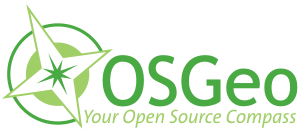Selected Presentations
Home > Presentations > Abstract details
Title
MERGING PARTICIPATORY-GIS APPROACHES AND FOSS4G: A CASE STUDY USING MAPWINDOW-GIS TO BUILD A COMMUNITY-BASED NATURAL RESOURCE MAPPING SYSTEM IN CLAVERIA, MINDANAO, THE PHILIPPINES
Abstract
Participatory-GIS (PGIS) advocates the participation of local stakeholders to generate, analyze and communicate spatial information for improved natural resource management (NRM). Current NRM projects in developing countries have increasingly focused on promoting community participation in its life cycle while at the same time ensuring the sustainability of the project outputs. In this paper, we present an on-going collaboration by the local government, a NGO and a community college to build a community-based natural resource mapping system in Claveria, Mindanao, the Philippines. The project is guided by the main principles of PGIS (community participation, local ownership and sustainability). Local field data gathering is being implemented using participatory methods (transect mapping, community mapping) while GIS-based activities are being accomplished using the FOSS4G tool, MapWindow GIS (ver 4.7). We describe the various MapWindow tools being used in the various stages of the PGIS project and review their capability to produce the required results. To better visualize the GIS outputs and promote local geospatial learning, a stand-alone scale relief model called P3DM (Participatory 3D Map) was constructed. The P3DM is being integrated with the outputs of MapWindow to produce the following: (a) Updated boundary map of villages, (b) Land cover mapping based on local knowledge and ASTER image, (c) Mapping of community services with GPS, (d) Updating of local place names of natural features, and the identification of critical watersheds. Merging PGIS and FOSS4G in the different stages of the project promotes local participation during data collection, development and management of geodatabases. The result of this merging also enhances GIS map outputs that can be easily applied to local resource planning. We conclude that conducting PGIS projects using FOSS4G tools promote spatial learning as well as ensure genuine local custodianship and ownership of the PGIS outputs.
Authors
Marc Delgado - Department of Geography
Frank Canters - Department of Geography

